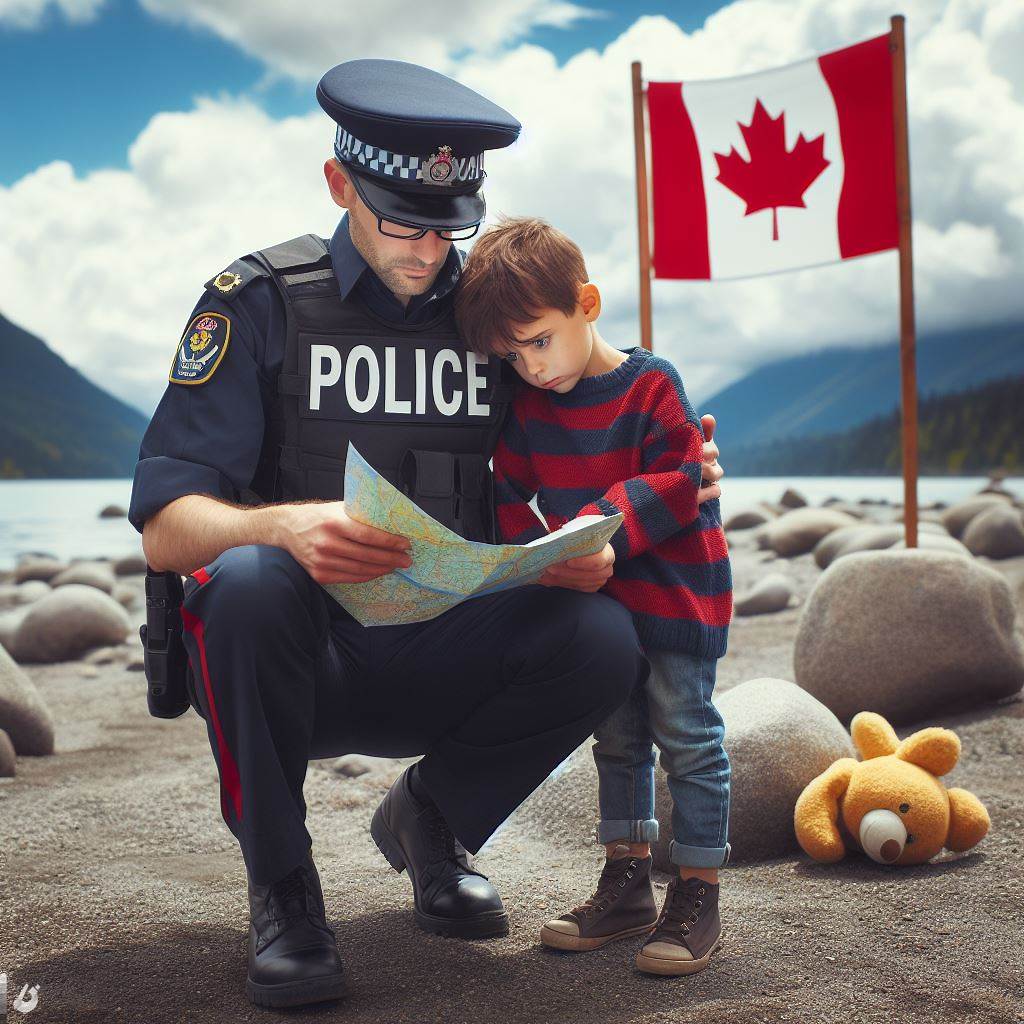Introduction
The establishment and enforcement of police and public safety laws are crucial in ensuring a peaceful and orderly society.
This blog post aims to provide an overview of Canadian police and public safety laws.
Police and public safety laws play a vital role in maintaining social order and protecting citizens’ well-being.
The objective of this blog post is to offer readers a comprehensive understanding of the Canadian legal framework regarding police and public safety.
By examining these laws, we can better comprehend the measures in place to safeguard individuals within Canadian society.
Understanding the legal framework surrounding police and public safety laws is essential for citizens to know their rights and responsibilities.
We will delve into various aspects, such as law enforcement agencies, their powers, and the rights individuals possess.
This blog post also seeks to shed light on the mechanisms in place to ensure accountability and transparency within the police force.
Furthermore, we will explore the legislative processes involved in making and amending police and public safety laws.
It is important to highlight how these laws evolve with societal changes and reflect the needs of the community.
By becoming familiar with Canadian police and public safety laws, individuals can actively engage in discussions surrounding reform and improvement.
In short, the significance of police and public safety laws cannot be overstated, as they contribute to a harmonious and secure environment for all Canadians.
Overview of Canadian Police
In Canada, the police play a crucial role in maintaining public safety and upholding the law.
They have various responsibilities that contribute to the well-being of the Canadian society and its citizens.
Role and Responsibilities
- Preventing and investigating crimes to ensure public safety and security.
- Enforcing laws and regulations to maintain order and protect individual rights.
- Responding to emergencies, accidents, and incidents to provide immediate assistance.
- Supporting crime victims during investigations and court proceedings.
- Providing community policing services, fostering positive relationships, and promoting crime prevention.
Structure of Canadian Police Forces
The Canadian police forces are structured at different levels, each with distinct jurisdictions and responsibilities.
Federal Level
The Royal Canadian Mounted Police (RCMP) is the federal police force in Canada and is responsible for enforcing federal laws nationwide.
Provincial Level
Each province in Canada has its own provincial police force that primarily focuses on enforcing provincial laws within their respective jurisdictions.
Municipal Level
At the local level, municipal police forces are responsible for maintaining law and order within their specific municipalities.
The Significance of the Royal Canadian Mounted Police (RCMP)
The RCMP holds a special place in Canada’s police system and has a significant historical and cultural importance.
A Unique Heritage
Originating as the North-West Mounted Police in 1873, the RCMP played an essential role in western expansion and maintaining order in the Canadian frontier.
National Jurisdiction
The RCMP serves as the federal and provincial police force in areas without provincial police forces. It also assists provinces and municipalities when needed.
International Cooperation
As the RCMP is a federal agency, it represents Canada internationally, working with other countries’ law enforcement agencies to combat transnational crimes.
Iconic Red Serge Uniform
The RCMP’s distinctive red serge uniforms and Stetson hats are iconic symbols of Canadian identity and are recognized worldwide.
Role in Indigenous Communities
The RCMP has a significant presence in Indigenous communities, working to improve relationships, address historical issues, and provide policing services.
In fact, Canadian police play a vital role in maintaining public safety and enforcing laws.
Unlock Your Career Potential
Visualize a clear path to success with our tailored Career Consulting service. Personalized insights in just 1-3 days.
Get StartedThe structured police system, consisting of federal, provincial, and municipal levels, ensures effective enforcement across Canada.
The RCMP, with its historical significance and national jurisdiction, holds a special place in Canadian society.
Read: Cultural Sensitivity Training in Policing
Legislation and Regulations
When it comes to Canadian police and public safety, there are several key laws and regulations that govern their operations.
These laws are put in place to ensure the safety and well-being of the public, as well as to maintain order and enforce the law.
Canadian Charter of Rights and Freedoms
One of the most important legislative documents governing law enforcement in Canada is the Canadian Charter of Rights and Freedoms.
This document outlines the fundamental rights and freedoms of all individuals within Canadian jurisdiction.
The Charter has a significant impact on law enforcement as it sets the standard for police conduct and ensures that individuals are treated fairly and without discrimination.
It guarantees rights such as the right to be free from unreasonable search and seizure, the right to a fair trial, and the right to freedom of expression and assembly.
Law enforcement agencies must adhere to the principles outlined in the Charter, and any violations of these rights can lead to legal repercussions for the police officers involved.
Criminal Code of Canada
The Criminal Code of Canada is another crucial legislation that dictates how law enforcement operates in Canada.
It is a comprehensive statute that defines criminal offenses and outlines the penalties for committing these offenses.
The Criminal Code covers a wide range of crimes, including but not limited to homicide, assault, theft, fraud, and drug offenses.
It provides law enforcement with the legal framework needed to investigate, charge, and prosecute individuals who commit these crimes.
Police officers rely heavily on the Criminal Code when conducting their day-to-day operations.
It guides them in determining whether an offense has been committed, what charges should be laid, and how to gather evidence to support their case.
Other Important Legislations
In addition to the Canadian Charter of Rights and Freedoms and the Criminal Code of Canada, there are other important legislations related to public safety in Canada.
One such legislation is the Emergency Management Act. This act outlines the procedures and protocols to be followed in the event of emergencies, such as natural disasters or terrorist attacks.
It provides a framework for emergency preparedness, response, and recovery, ensuring that law enforcement and other agencies work together effectively to mitigate the impact of emergencies on public safety.
Other legislations, such as the Firearms Act, regulate the possession and use of firearms in Canada. These laws aim to prevent gun violence and ensure responsible gun ownership.
Overall, the legislation and regulations pertaining to Canadian police and public safety play a crucial role in maintaining law and order while protecting the rights and freedoms of individuals.
Adherence to these laws is essential for law enforcement agencies to operate within legal boundaries and ensure public trust and confidence in their work.
Read: Policing in Canada: Rural vs. Urban Areas
Police Powers and Limitations
Canadian police officers wield powers, including arrest, search, and seizure, crucial for public safety and law enforcement.
- Arrest Powers: Officers can detain individuals based on reasonable grounds for committing criminal offenses, ensuring justice system involvement.
- Search and Seizure: Police may enter premises, vehicles, or individuals when having reasonable grounds to secure evidence related to a crime.
However, to prevent misuse, police accountability is paramount, facilitated by oversight bodies:
- Office of the Independent Police Review Director (OIPRD): Investigates public complaints against officers, ensuring accountability for misconduct allegations.
- Civilian Review and Complaints Commission for the RCMP (CRCC): Independently reviews RCMP complaints, offering impartial assessments and recommendations for improved practices.
- Provincial Oversight Agencies: Entities like the Ontario SIU and BC IIO investigate serious incidents involving police, ensuring lawful conduct and adherence to powers.
Internal review processes within police organizations further promote professionalism and ethical conduct.
Generally, while police powers are essential for law enforcement, oversight bodies are crucial for accountability, transparency, and public trust.
Read: The Evolution of Canadian Police Uniforms

Issues and Challenges
- Increasing rates of crime and violence pose significant challenges to Canadian police and public safety laws.
- The emergence of new and complex forms of criminal activity, such as cybercrime and terrorism, requires innovative approaches in law enforcement.
- Systemic issues within the police force, including racial profiling and use of excessive force, undermine public trust and confidence.
- Inadequate resources, including funding and personnel, limit the effectiveness of law enforcement in addressing crime and ensuring public safety.
- Technological advancements and the widespread use of social media present new challenges in preventing and investigating criminal activities.
- The ongoing opioid crisis and its impact on public safety necessitate a comprehensive approach in tackling drug-related issues.
Ongoing Efforts to Improve Community Policing
- Community policing initiatives aim to foster collaboration between police and the public, promoting safety and trust.
- Increased community engagement, through programs like neighborhood watch and community advisory boards, can enhance police effectiveness.
- Implementing community-oriented policing strategies can improve communication and build positive relationships between law enforcement and the public.
- Regular dialogue between police and community leaders helps identify concerns and develop tailored strategies to address local issues.
- Diversifying police forces to reflect the communities they serve can help bridge the gap between the police and marginalized groups.
- Training programs that emphasize cultural competency, de-escalation tactics, and unbiased policing reinforce community trust.
Addressing Systemic Barriers and Biases
- Recognizing and addressing systemic barriers within law enforcement is crucial for ensuring equal treatment and justice for all individuals.
- Implementing measures to eliminate racial profiling and discriminatory practices can restore public confidence and trust in the police.
- Enhancing transparency and accountability mechanisms within law enforcement agencies is essential in promoting fairness and reducing biases.
- Evaluating and redesigning policies and procedures to ensure they are inclusive, equitable, and respectful to all individuals is vital.
- Collaborating with community organizations, advocacy groups, and marginalized communities can help in identifying and rectifying systemic barriers.
- Promoting diversity and inclusion within law enforcement agencies can foster a culture of understanding and sensitivity towards different communities.
Read: Salary and Benefits of Police in Canada
Collaboration with Public Safety Partners
- Canadian police forces prioritize collaboration with public safety agencies to ensure effective crime prevention and security measures.
- The Canadian Border Services Agency (CBSA) is a crucial partner, enhancing border security and facilitating legitimate flows.
- Collaboration with the Canadian Security Intelligence Service (CSIS) provides intelligence to counter national security threats.
- Coordination among agencies ensures a unified response, optimizing resources, and addressing emergent threats promptly.
- Information sharing is pivotal for identifying, preventing, and responding to potential risks and criminal activities effectively.
Basically, Canadian police forces, through collaboration, coordination, and information sharing, strengthen public safety efforts, safeguarding the nation collectively.
Conclusion
This section has highlighted the key points regarding Canadian police and public safety laws.
We have discussed the importance of these laws in ensuring the well-being and security of the public.
It is evident that continuous efforts are being made to make these laws more effective and responsive to the needs of the community.
It is essential for individuals to stay informed about their rights and responsibilities when it comes to Canadian law enforcement.
By doing so, they can actively contribute to their own safety and help maintain the integrity of the legal system.
Understanding the role and limitations of the police can foster a cooperative and supportive relationship between the public and law enforcement agencies.
Therefore, it is crucial for readers to stay informed and updated with the latest developments in Canadian law enforcement policies.
This can be achieved through actively seeking information, attending community seminars, and staying connected with reliable sources of legal information.
By being knowledgeable about their rights and responsibilities, individuals can contribute to the effectiveness of police and public safety laws.
Ultimately, it is a collective responsibility to uphold the values of justice, fairness, and security in the Canadian society.




